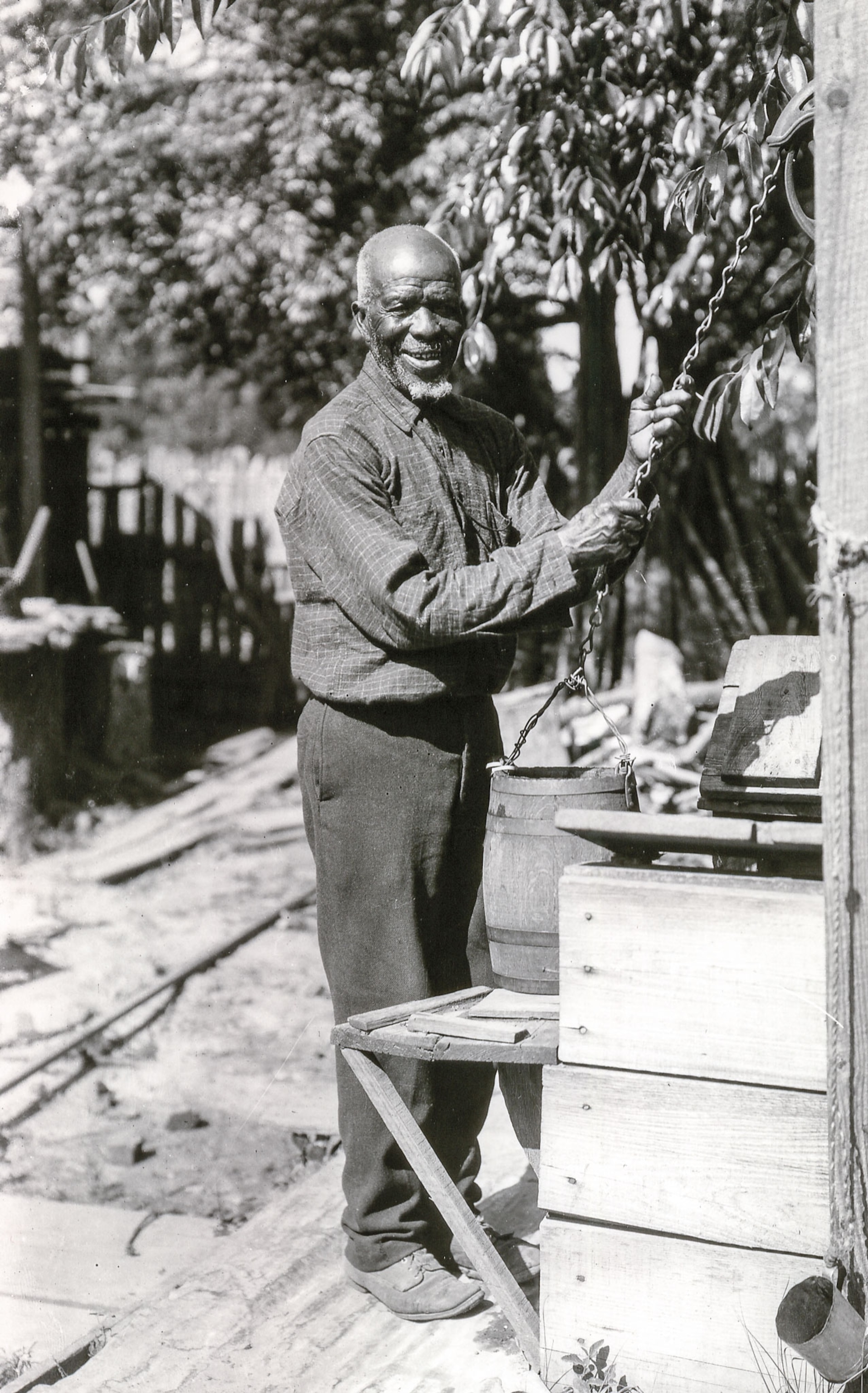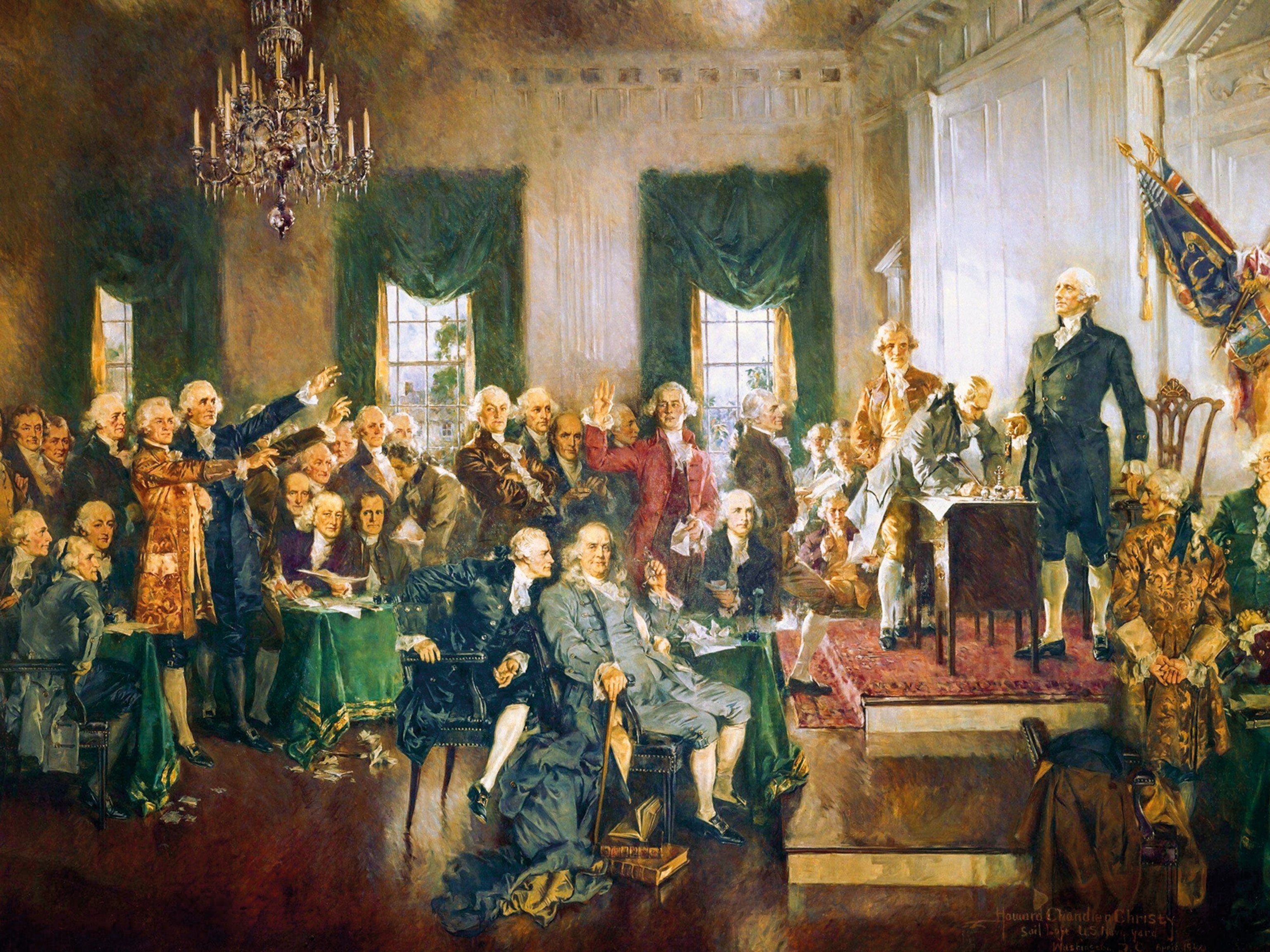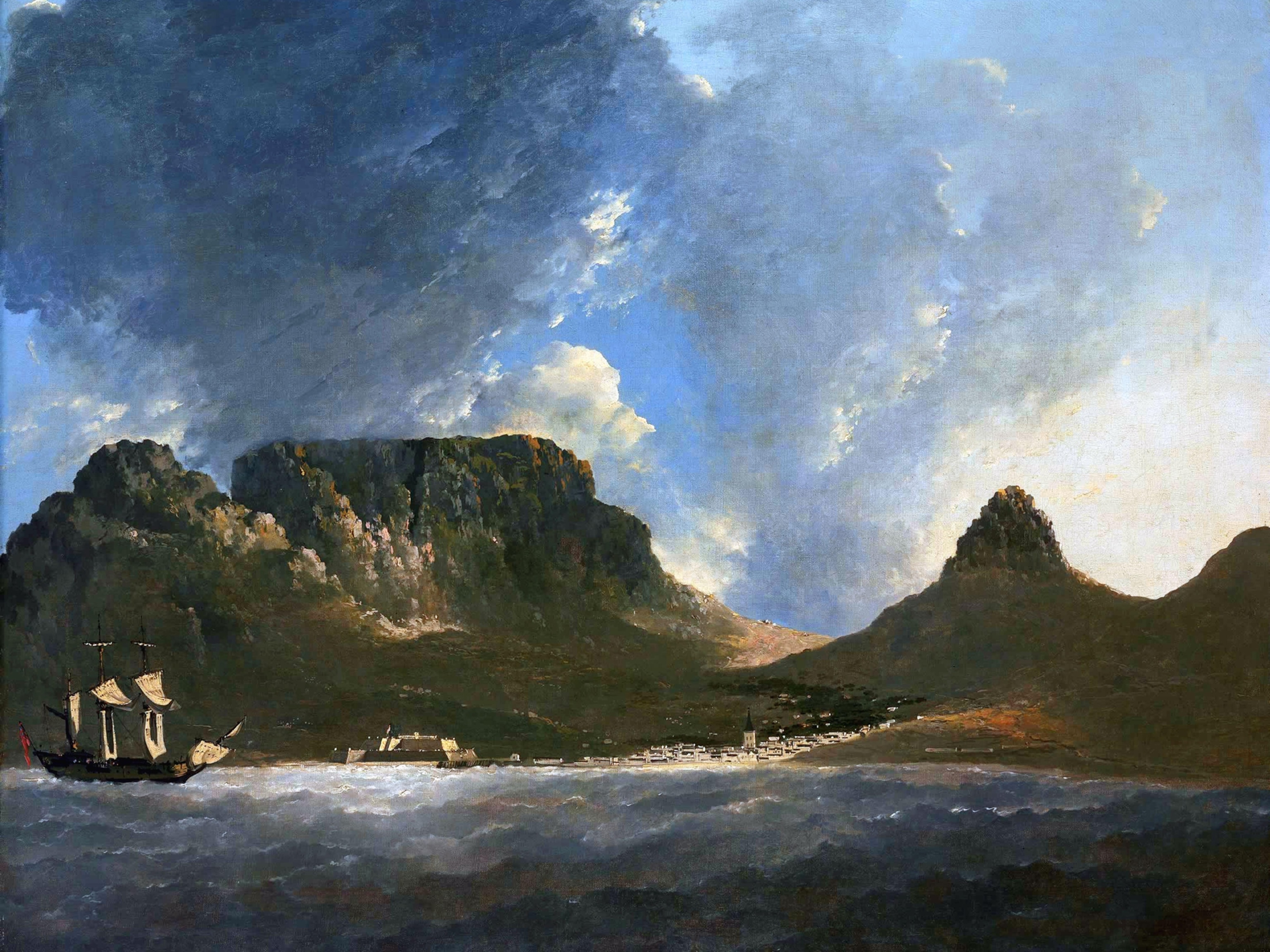An Alabama shipwreck reveals the untold story of the international slave trade
Defying federal laws that punished slave trading with death, slavers smuggled enslaved Africans into the United States for the last time in 1860.

One dark night in July 1860, fire danced over the waters of Mobile Bay as a schooner was set ablaze. She was the Clotilda and had just illegally smuggled 110 West Africans into the United States on the eve of the Civil War. The perpetrators hoped to erase proof of their illegal voyage, by setting her on fire, but the ship could not stay hidden forever.
On May 22, 2019, a collaboration of the Alabama Historical Commission, National Geographic Society, Search Inc., National Museum of African American History and Culture, Slave Wrecks Project, and National Park Service identified the slaver Clotilda. The search for the shipwreck had taken years of intensive work, oten complicated by the fact that the surrounding waters are packed with many other shipwrecks from years past. Meticulous historical research paired with cutting-edge archaeology proved that this ship was indeed the long-lost Clotilda, the last American slave ship. (Before the last slave ship was found, experts had been searching for the Clotilda for more than a century.)
In the antebellum South, enslaved labor had been powering the region’s economy for hundreds of years. The international slave trade supplied much of this labor force during the colonial era, and the domestic trade took over in the 19th century. While the trans-Atlantic slave trade, which lasted between 1525 and 1866, displaced more than 12 million Africans by forcibly sending them to the Americas, the Clotilda’s captives were the last of an estimated 389,000 brought from Africa to North America from the early 1600s to 1860. (See the evidence that helped archaeologists identify Clotilda.)
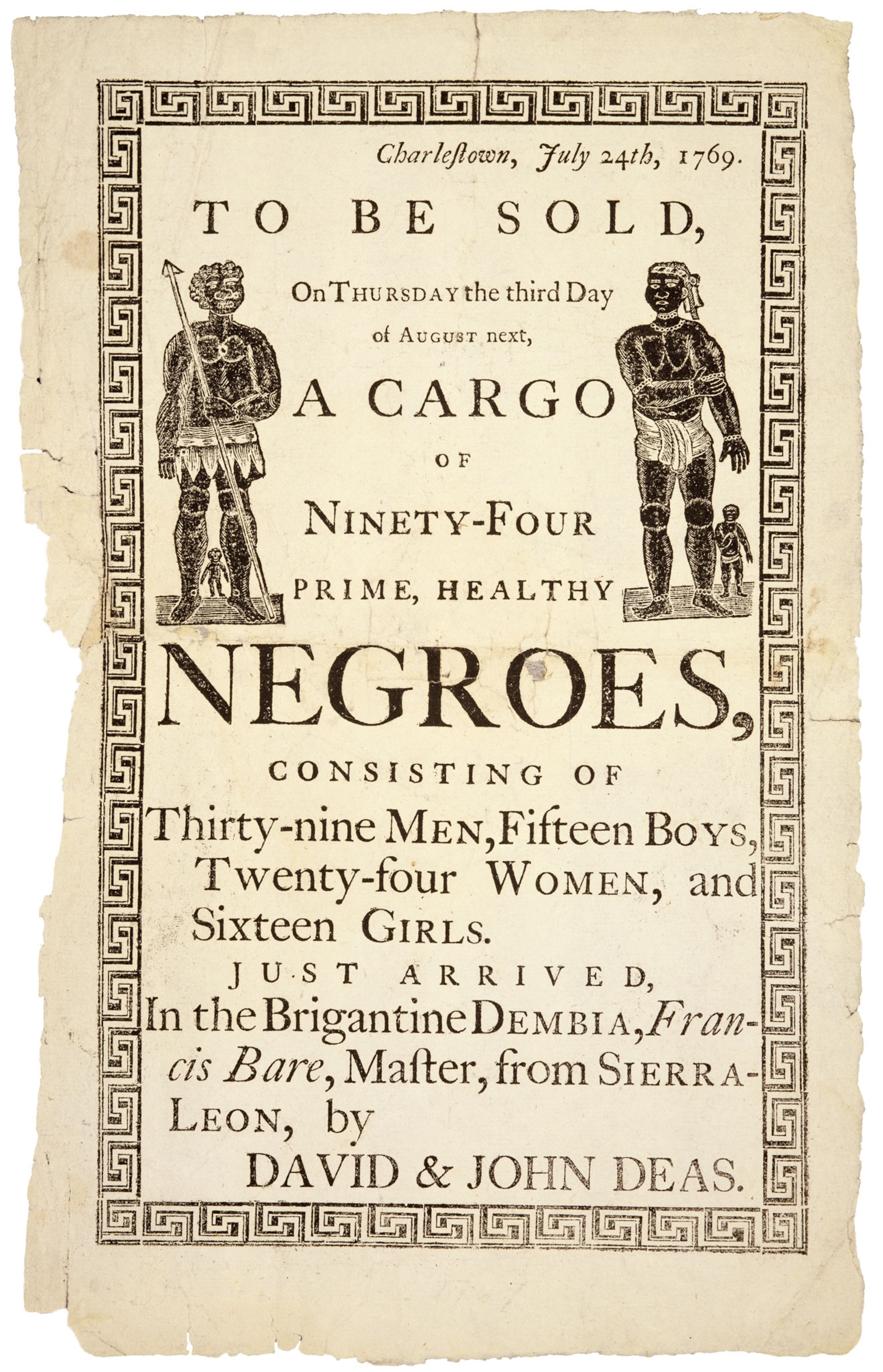
Banning the trade
After the War for Independence, the new nation’s divided attitudes toward slavery became apparent as its founding documents were being written in the 1780s. To join the free and slave states, several compromises were made over the institution, including the legality of the international slave trade. The vaguely worded Article 1, Section 9, says that the government will not interfere in “the Migration or Importation of such Persons as any of the States now existing shall think proper to admit” before 1808, protecting the trade for 20 years. (How did slavery begin in the United States?)
Two decades later, the Slave Trade Act criminalized the “importation of any negro, mulatto, or person of color from any foreign kingdom, place, or country into the United States for the purposes of holding, selling, or disposing of such persons as slaves .” Effective January 1, 1808, the act further states that violators would be guilty of a high misdemeanor, punishable by not more than ten, but not less than five years in prison.
Punishable by Death
Prior to 1808 slave importation was legal in South Carolina, Georgia, and Louisiana, but the Act to Prohibit Importation of Slaves changed that in 1808. Smugglers continued to illegally import Africans for slave labor. Congress passed several acts to sharpen the teeth of the act, but none so much as the Act of 1820 “to . . . punish the crime of piracy.” In it, legislators proclaimed that anyone participating in the international slave trade—financiers, captains, or -sailors—would be committing piracy, a crime punishable by heavy fines and death. Smuggling of Africans did continue in violation of the Piracy Act. According to the Schomburg Center for Research in Black Culture, about 100,000 people were forcibly brought into the country between 1800 and 1807. After 1820, they estimate that 10,000 people or fewer were smuggled into the United States.
Despite the transatlantic slave trade being illegal, importation of enslaved Africans did not stop completely. Smuggling still continued—not only because it made money, but also because it rebuffed attempts by the federal government to take away the “states’ rights” to regulate imports. More legislative attempts followed to outlaw the trade, capped off in 1820 when the United States criminalized slave smuggling as an act of “piracy,” punishable by death. (By the numbers: Explore the data on slavery in the United States.)
In the 1800s the growth of cotton as a cash crop reenergized the power of the slaveholding states. The Indian Removal Act of 1830 dispossessed massive numbers of Cherokee, Creek, Choctaw, Chickasaw, and Seminole Indians of their land by 1838, thereby increasing the amount of nutrient-rich land available for cotton production in the black belt region that encompassed the Gulf Coast states.
Domestic trade
The demand for slaves increased exponentially with the rise of King Cotton, the reigning cash crop in the South. The burgeoning cotton monopoly is measured largely by the number of bales produced annually in the black belt during the second half of the 19th century, with three million bales produced in 1852, 3.5 million bales in 1856, and five million bales in 1860. As demand for labor increased in the established and emerging cotton plantations in the black belt and in the West, the domestic slave trade exploded within the United States.
When Cotton Was King

In the decades before the Civil War, the Southern economy centered around growing cotton. The dominant cash crop fed the textile industries in Great Britain and the northern United States. Pro-slavery Southern planters and politicians argued that cotton was so important, that everything would collapse without it. The most famous proclamation of this belief came in March 1858 when Senator James Henry Hammond of South Carolina, a planter and owner of about 300 enslaved people, arrogantly proclaimed, “[W]ould any sane nation make war on cotton? Without firing a gun, without drawing a sword, should they make war on us we could bring the whole world to our feet. What would happen if no cotton was furnished for three years? ... [T]his is certain: England would topple headlong and carry the whole civilized world with her, save the South. No, you dare not make war on cotton. No power on earth dares to make war upon it. Cotton is king.”
Within the domestic trade, slaves were sourced primarily in Virginia, Maryland, and Delaware, through sales by owners who commodified and collateralized African Americans. Some supplied the domestic trade through the kidnapping of enslaved and free blacks, owing to the Fugitive Slave Act of 1850, from free states. Others trafficked in jailed “runaway slaves.”
In the domestic slave trade, slaves were transported by sea, by train, by river, and by land, forced to walk hundreds of miles from their plantations or places of origin to southern and western markets where they were sold to plantation owners. Blacks viewed enslavement or re-enslavement on southern and western plantations as a death sentence because of the arduous nature of cotton production at an inhumane pace and in sweltering heat. Their plight was further exacerbated by the psychological and emotional traumas experienced when they were separated from their spouses, siblings, and children. Slaves who dreaded separation from their original plantations and re-enslavement on new ones staged revolts aboard vessels deployed in the domestic slave trade. (Nat Turner tried to free his people in an 1831 slave revolt in Virginia.)
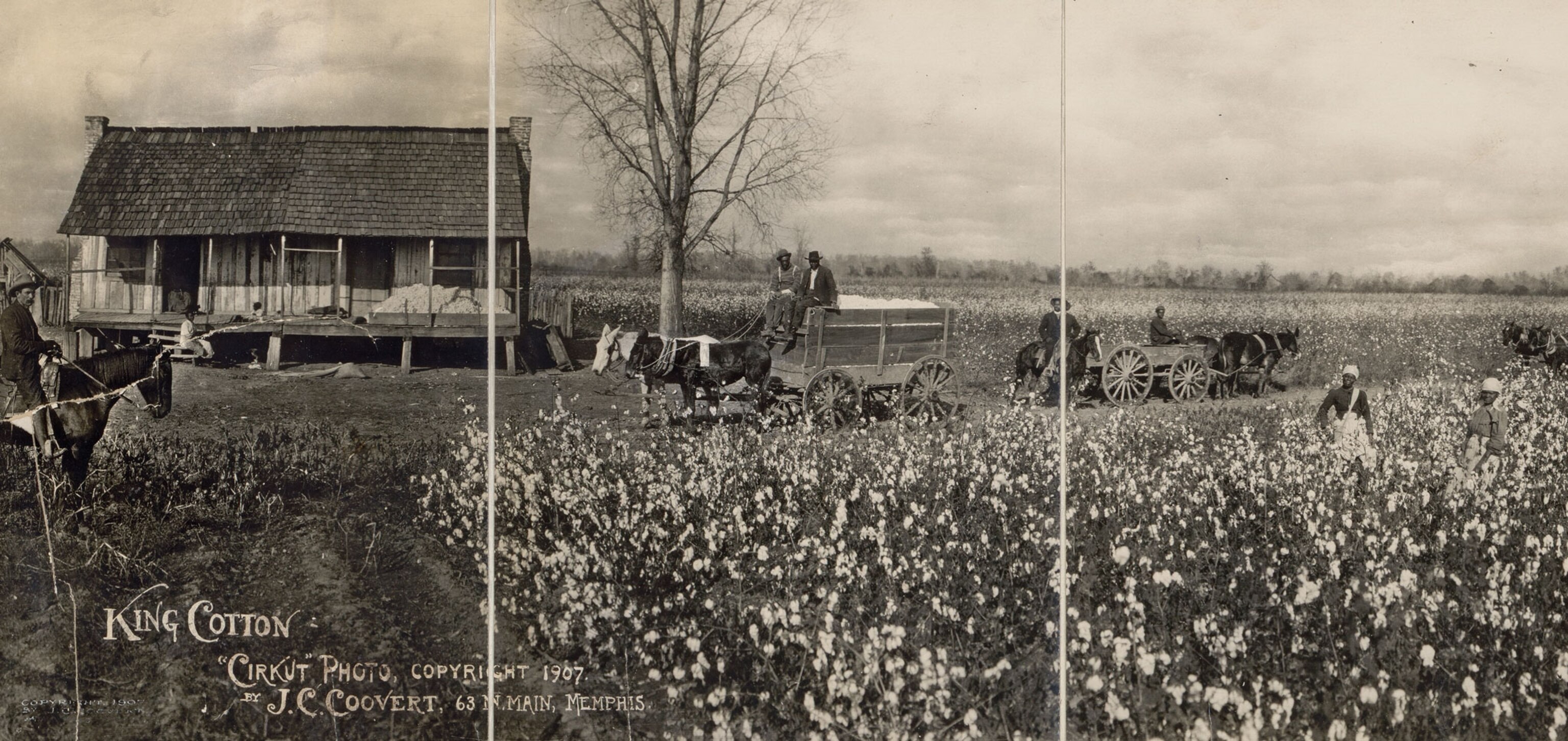
The domestic slave trade continued through the Civil War. As late as April 1865, one year after the U.S. Senate passed the 13th Amendment that abolished slavery (when ratified), records noted that Lumpkin’s Jail in Richmond, Virginia, “shipped fifty men, women, and children . . . This sad and weeping fifty, in handcuffs and chains, were the last slave coffle that ever shall tread the soil of America.” Before the end of the domestic slave trade, more than 1.2 million people were victimized (enslaved or re-enslaved), generating tremendous profits for domestic slave traders and for buyers who exploited their labor.
Human trafficking
As the domestic slave trade thrived and grew, illegally importing slave labor from Africa did continue. The practice was more common in the states of the black belt region where there was strong contempt for the federal government’s anti-smuggling efforts. Pro-slavery forces even attempted to reintroduce the Atlantic slave trade back to the United States. Southerners viewed efforts to strengthen anti-smuggling laws not only as an encroachment upon their states’ rights but also as a threat to both their economic livelihood and social status as masters of slaves.
Even under the threat of death, smuggling continued in order to feed the heightened demand for laborers in the black belt. Federal efforts to prevent slave smuggling were undermined by various ruses deployed by smugglers and by quid pro quo relationships among slave smugglers, consular agents, judges, and other authorities charged with enforcing federal anti-smuggling laws on land and at sea.
The federal government continued to strengthen existing anti-smuggling laws in the 1840s and 1850s. American ships departing for Africa had to notify the district attorney. The vessel would then be searched to confirm that it was not outfitted for a slaving voyage. Monetary rewards increased for American citizens who informed on slave smugglers, giving informants $250 for each African captured as contraband. Moreover, Congress funded measures to regulate ship registries more closely, requiring Americans to consent to a right of search by American and British steamers patrolling the West African coast.
Death of a Smuggler
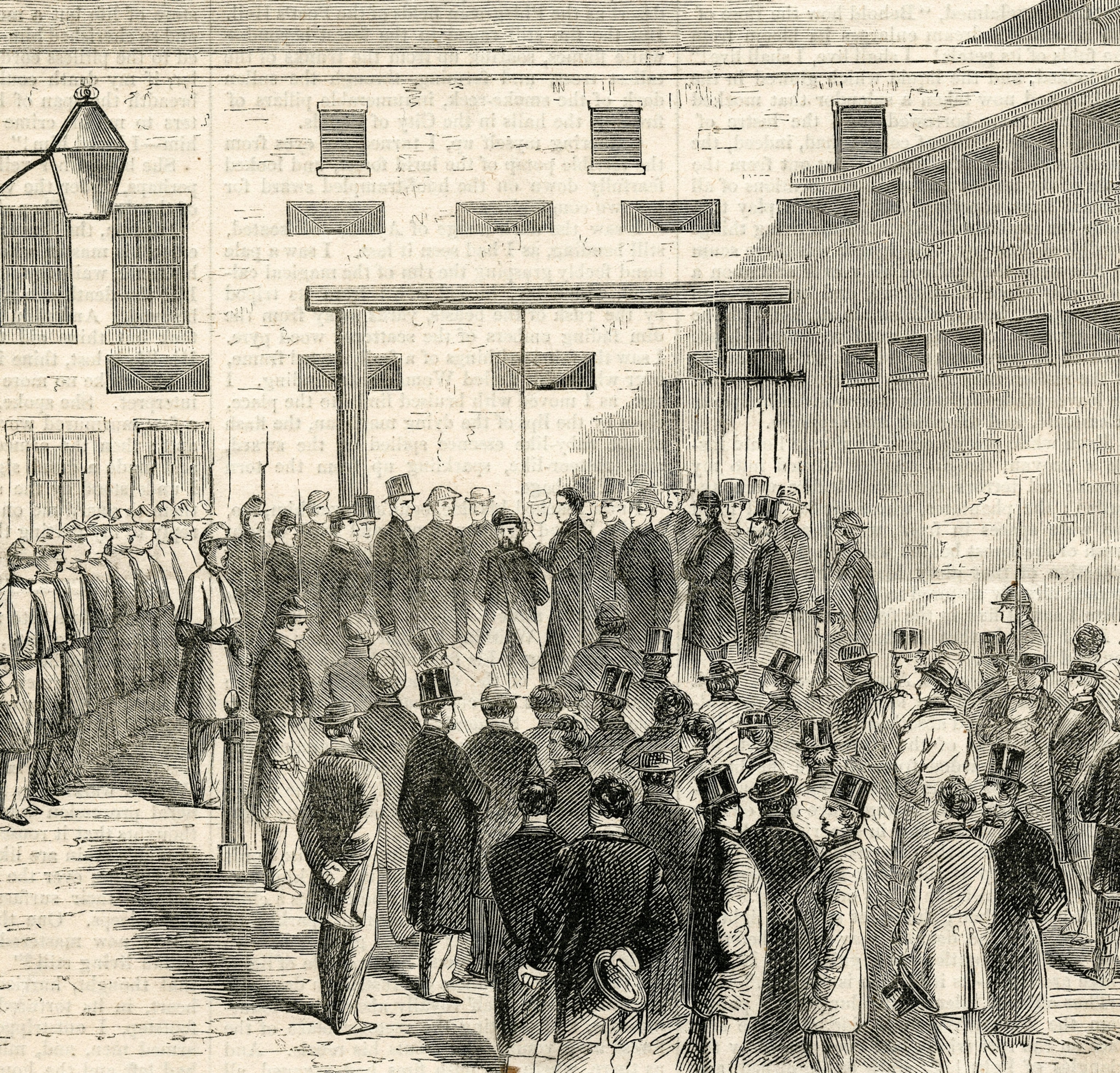
In the 45-year span between the Piracy Act in 1820 and the end of slavery in 1865, only one smuggler, Captain Nathaniel Gordon, was caught, successfully prosecuted, convicted, and hanged for illegal importation of African people. In August 1860 Captain Gordon’s ship, the Erie, was transporting 897 captives in the hold when it was overhauled by U.S. naval authorities, just off the West African coast. Naval officers libeled and condemned the Erie; the captives were taken to Liberia, while Captain Gordon was taken to New York to be tried. He was convicted, and sentenced to death by hanging. The night before his scheduled execution on February 21, 1862, Gordon attempted suicide by taking poison, but he was revived so that he could be publicly hanged.
A wager
The Clotilda smuggling venture was hatched in 1860 in defiance of the federal government’s anti-smuggling legislation. Timothy Meaher, a wealthy plantation and steamboat magnate of Mobile, Alabama, made a bet that he could successfully smuggle Africans into the United States without being prosecuted. Meaher originally hailed from a family of shipbuilders in Maine. He relocated to Mobile where he established a shipyard, a lumber mill, a plantation, and a steamboat business, thereby positioning himself to profit from all aspects of the cotton boom.
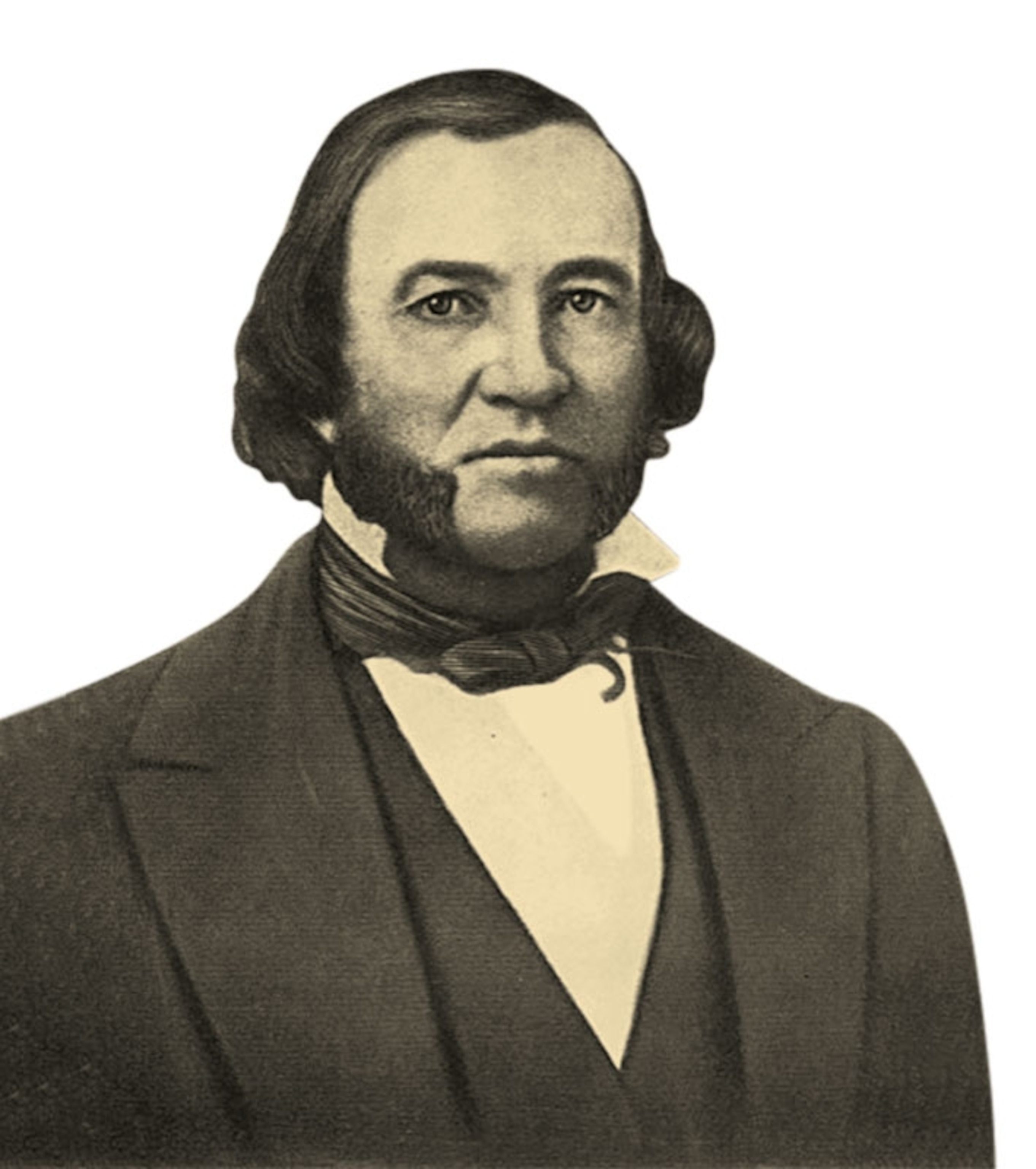
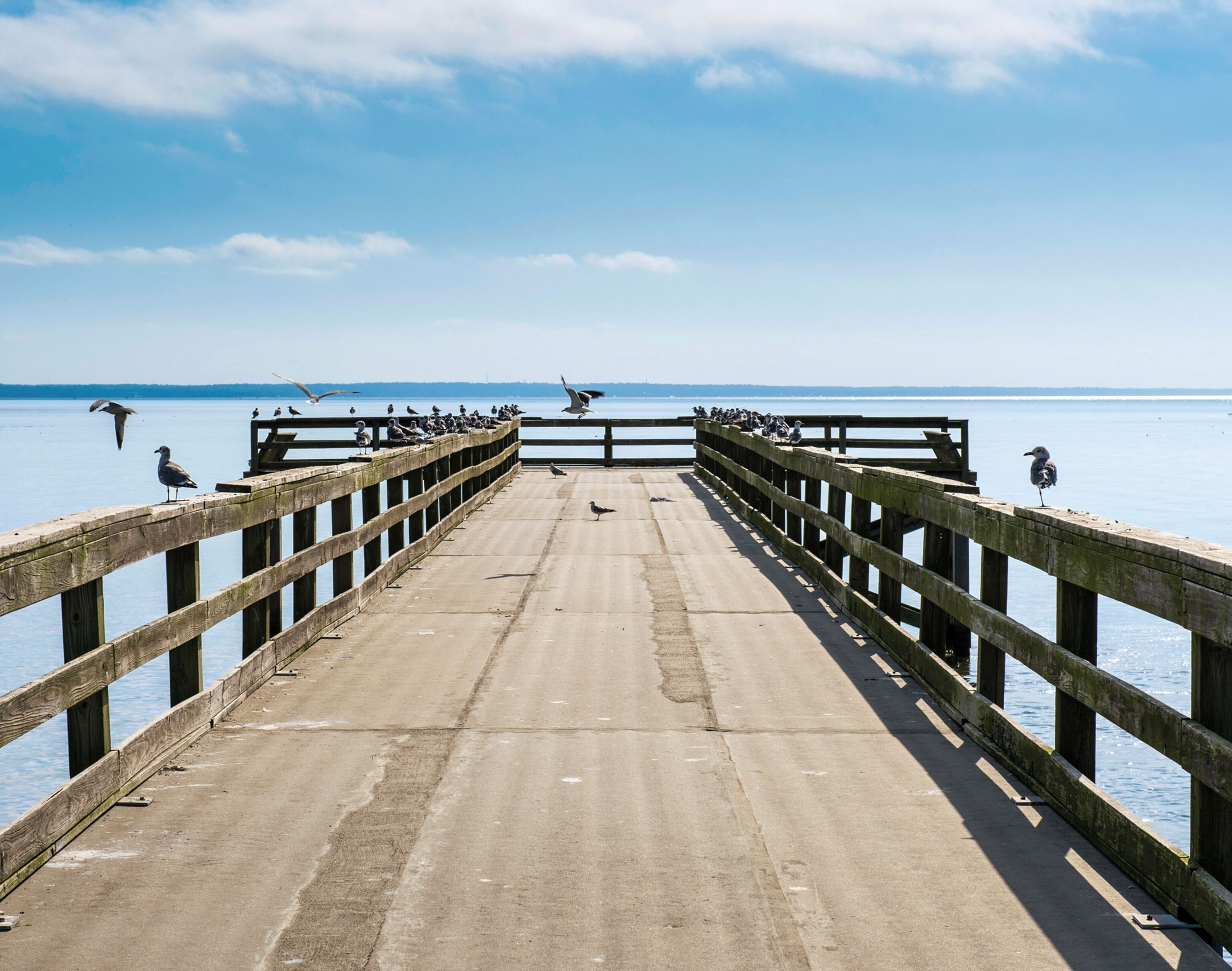
By 1850 Alabama had surpassed Mississippi as the leading cotton producer in the black belt region. Meaher himself transported over 1.7 million bales of cotton from various plantations to the Mobile docks in the course of his steamboat business that he operated along with his brothers James and Byrne. Timothy Meaher’s economic and political interests went beyond preserving slavery in the United States. He was even involved in efforts to expand it to other nations. To feed his growing business, Meaher advocated reestablishing the international slave trade as an alternative, less expensive source of labor than the domestic slave trade.
The success of Meaher’s smuggling venture would depend on the experience of a skilled captain: William Foster, the owner of a fast schooner called the Clotilda. Foster belonged to a family of sailors and shipbuilders who hailed from Fisher’s Grant, Pictou, Nova Scotia. Like the Meahers, the Fosters relocated to Mobile, where they could profit as shipwrights.
A sleek schooner weighing 120 81/95 tons, the Clotilda and fast clipper ships like her were designed for speed to evade capture. Both American and Spanish smugglers utilized these fast-sailing, nimble vessels to elude sluggish government steamers. These ships also “clipped” or decreased the sail time of transatlantic voyages. Insurance documents from the time revealed the Clotilda’s unique construction and dimensions.
To Africa and back
As late as 1858, the Daily Register, Mobile’s leading newspaper, announced that, “The King of Dahomey was driving a brisk trade in slaves, at from $50 to $60 each, at Wydah [Ouidah].” While not all Africans sold other Africans in the slave trade that constituted a buyer-driven market, the Fon warriors of Dahomey sold millions of Africans into the slave trade. Therefore, Meaher and Foster chose Ouidah as the slave port.
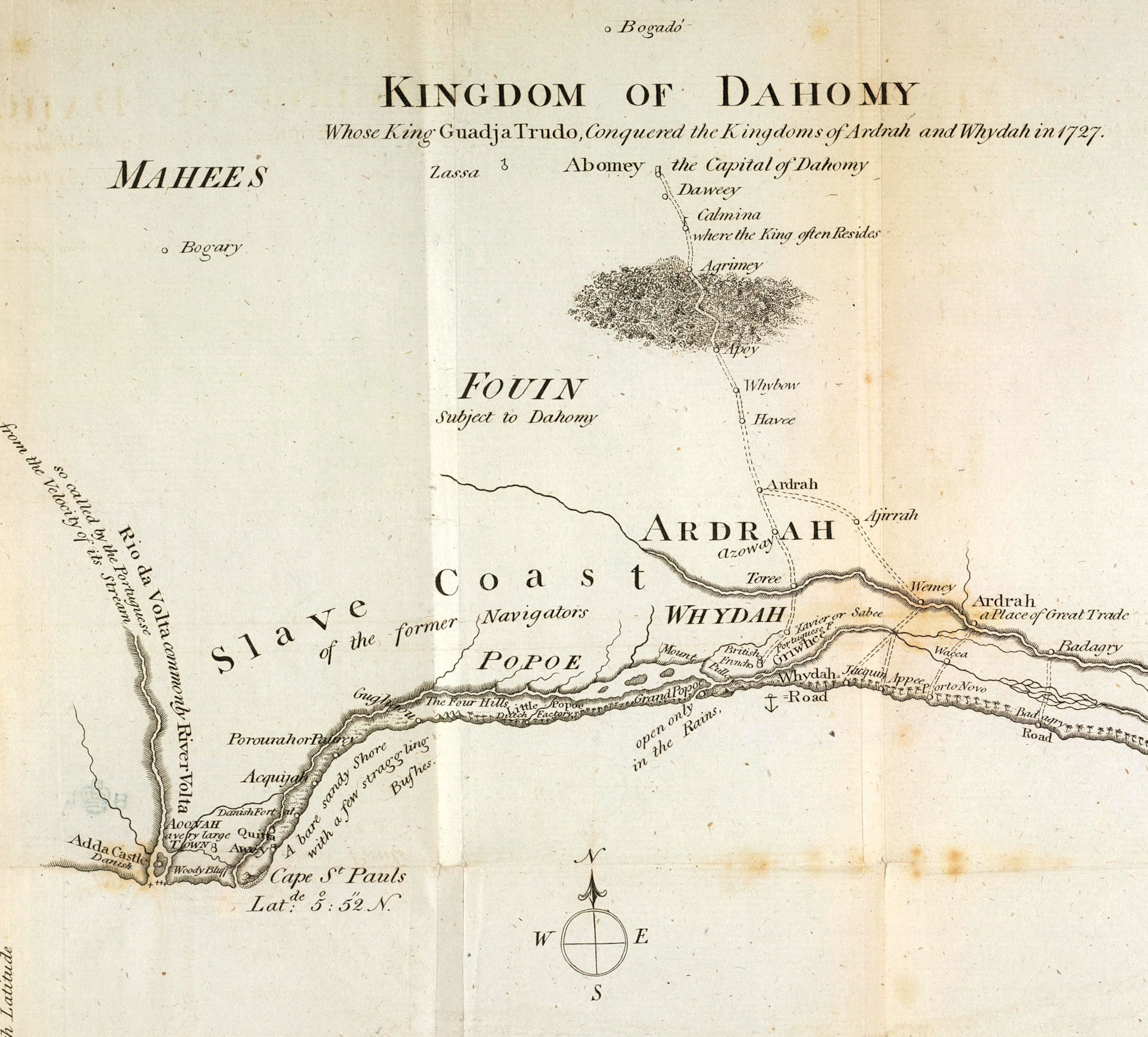
In violation of the Piracy Act, the Clotilda was outfitted with large amounts of lumber planks and water casks, for smuggling slaves. Captain Foster and his 11-man crew set sail for Ouidah on March 4, 1860. Damaged by various storms in the Atlantic Ocean, the Clotilda called at the port of Praia, Cape Verde, for repair.
Despite the obvious signs that the Clotilda was outfitted for human cargo, the U.S. consul at Praia, William H. Marse, did not interrogate Captain Foster. Foster lavished the consul’s wife with expensive shawls, beads, and sundries. Smugglers regularly factored bribes or “hush money” into the budgets for their smuggling ventures. Those bribes could be money, Cuban cigars, clothing, and jewelry. Having repaired the Clotilda at Praia, and having averted an interrogation by U.S. Consul Marse serving duty there, Captain Foster set sail, once again, for Ouidah.
The slave port was controlled by the powerful Fon warriors of the hinterland kingdom of Dahomey. Only select groups of Africans participated in the slave trade as sellers, and the Fon warriors of Dahomey were among them. They were militarily equipped to launch raids, most of which were led by female soldiers known as “Amazons.” Dahomey’s people were engaged in a protracted war with neighboring Yoruba groups who resided primarily in southwestern Nigeria. For this reason, the Clotilda cargo consisted of Yoruba-speaking Africans as well as people from more culturally—and linguistically—diverse villages in central Nigeria.
Once captured in the interior, captive Africans were taken to the port city of Ouidah and warehoused in the village of Zoungbodji. The inland village of Zoungbodji figured prominently in the slave-trading protocol devised and implemented by the Fon warriors. Like all captains seeking to purchase African captives at Ouidah, Foster was subject to strict protocol devised by Dahomean officials. In adherence to the Fon’s slave-trading procedure, Foster had to pay trade duties, undergo surveillance, and negotiate the purchase through a series of appointed officials who represented the Dahomean king Glele. Records show Foster paid $9,000 in gold for 125 Africans, who were worth 20 times more in Alabama.
The Fon warriors transferred the captives from Zoungbodji to a temporary barracoon on the beach. From there, they were placed in canoes and taken to the Clotilda anchored offshore. The United States had employed ships in their so-called African Squadron to patrol shores in the region, and Captain Foster feared that they might catch him in his illegal enterprise. Captain Foster hastily weighed anchor, leaving 15 captives behind, so the Clotilda’s human cargo comprised just 110 Africans, primarily from southwestern and central Nigeria, with at least one Fon captive from Dahomey.
A federal cruiser did give chase but could not overtake the faster schooner. The Clotilda embarked upon her Middle Passage voyage back to Alabama. Owing to the schooner’s speed, the voyage would be completed in roughly six weeks rather than the customary three months.
The schooner arrives
On July 9, 1860, under the cloak of night, the Clotilda entered the waters off Alabama. She was hitched to a tugboat and towed upriver, where Captain Foster off-loaded the African captives from the ship’s dark, fetid hold. They were hidden in a canebrake and then moved in great secrecy until they could be distributed to buyers who had prepurchased them. Foster sank and burned the Clotilda to the waterline.
ship to shore
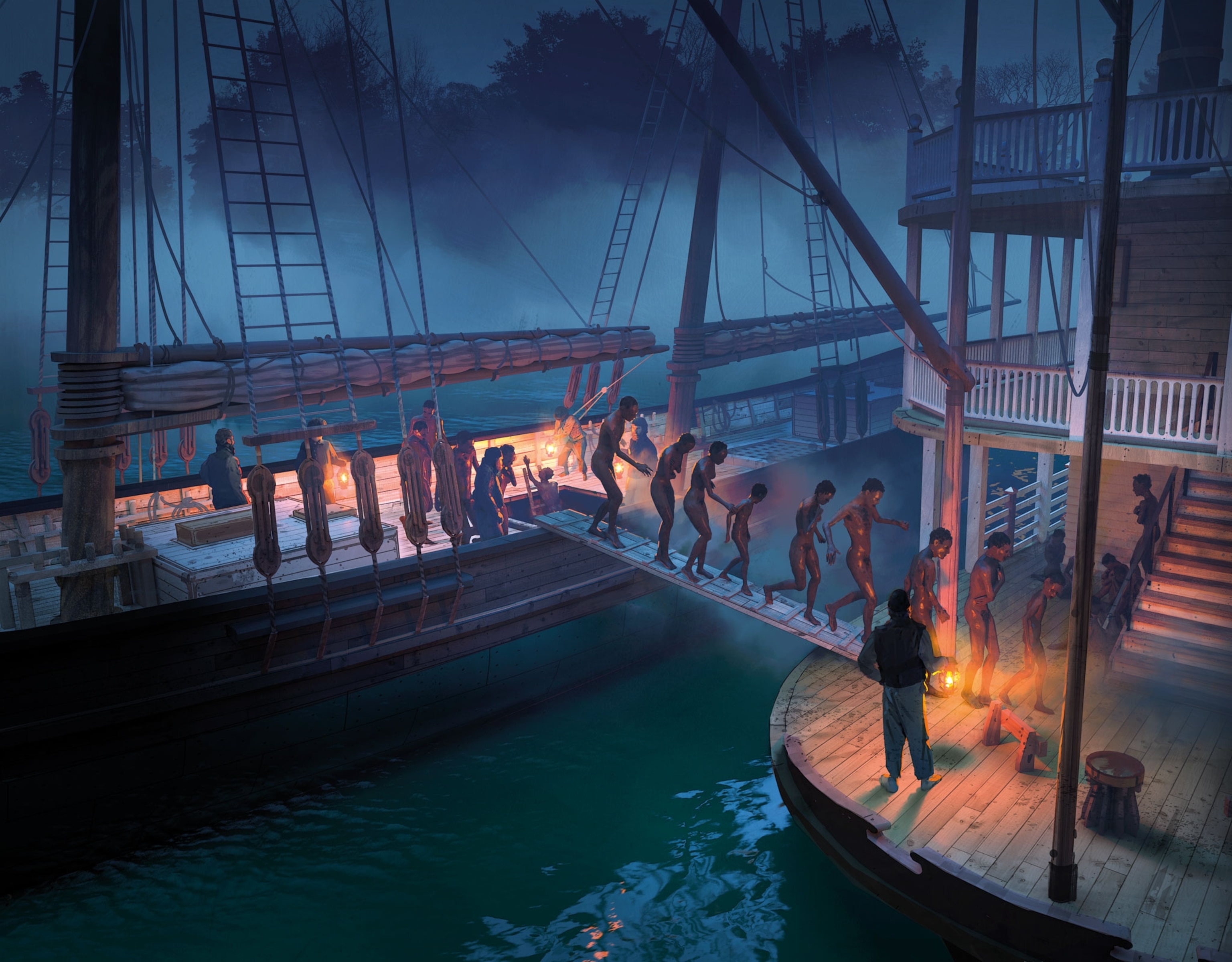
Both Meaher and Foster took precautions to avoid detection by federal authorities. After the Clotilda arrived in the waters of Alabama in early July 1860, Foster went ashore to alert Meaher of their arrival and then returned to his ship. Meaher boarded a tugboat, Billy Jones, which traveled down the Spanish river to meet the schooner. The Clotilda was tied to the tugboat, which pulled her silently upriver where it met a steamship, the Czar, helmed by Meaher’s brother Byrne. The African captives were transferred from the dark hold of the schooner to the waiting Czar, which took them to land. They were given ragged clothes and hidden in the tall, tangled canebrake along the river to avoid detection by any federal authorities. The captives would be enslaved until 1865, when the 13th Amendment ended slavery.
Foster had covertly entered the Port of Mobile without showing the Clotilda’s manifest and without paying customs duties as required by law. Consequently, the collector of customs reported Captain Foster, and he was summoned to court. Foster was heavily fined but not prosecuted for violating the Piracy Act.
Timothy Meaher was arrested, but he also escaped prosecution. Fellow slaveholder and pro-slavery advocate Judge William G. Jones of the Circuit Court of the United States for the Fifth Judicial Circuit (Southern District of Alabama) accepted Meaher’s false alibi. He escaped prosection and punishment by death. Meaher successfully smuggled the last cargo of enslaved Africans into the United States. He won his bet.
Legacy of Africa
After their arrival, the Africans from the Clotilda were enslaved on various plantations throughout Alabama, including the Bogue Chitto Plantation in Dallas County and the Meaher Plantation in Mobile. They worked and lived on these farms as the Civil War raged on. After the Confederacy lost and slavery was subsequently abolished, many of the newly freed longed to return home to West Africa, but they lacked the means.
Africatown Ancestor: Cudjo Lewis
Rather than succumb, more than 30 members of the Clotilda cargo purchased land north of Mobile, Alabama, to start their own homes. Historical records bear their names: Cudjo, Charlee, Polee, Gumpa, Jaba, Kanko, Zuma, and Abackey. They and their shipmates drew on their West African culture, expertise, and technical skills to build their own community, which became known as Africatown.
With a determination to overcome their ordeal, the Clotilda Africans constructed vernacular houses with adjacent gardens whose crops thrived based upon the agricultural acumen of their West African cultivators. An African-influenced work ethic, a communal lifestyle, and an age-grade system of governance sustained Africatown’s residents for generations.
Tales of the Clotilda voyage were passed down to descendants to keep the story alive despite denials from Mobile’s former slaveholders. One hundred fifty-nine years after her transatlantic voyage, the discovery of the Clotilda’s wreckage has validated the stories of the ancestors. (See also: Their ancestors survived slavery. Can their descendants save the town they built?)
Stories from Africatown

After the Union victory in the Civil War, slavery came to an end in the United States, and the captives of the Clotilda were free. More than 30 of them who had lived and worked near Mobile, Alabama, purchased their own tracts of land in an area north of the city. Several communities developed: Plateau, Lewis Quarters, Magazine, Prichard, Happy Hills, and Kelly Hills, which became collectively known as Africatown. Drawing on their African heritage, residents built homes and businesses, grew crops and tended livestock, and founded churches and schools. Africatown flourished, reaching a population of 12,000 in the 1960s. Industrialization and blight have since hurt the community, whose population has dropped to fewer than 2,000. The wreck of the Clotilda has become a beacon of hope for Africatown. Not only does its discovery confirm the stories of their ancestors, the wreck could also attract visitors, bringing in those who are hungry to learn about the legacy of the ones who survived the Clotilda and slavery.
Globally, the oceans and the riverbeds sing the dirges of millions of Africans who perished during the Middle Passage. After the United States banned the international slave trade, Meaher and Foster defied the law and got away with the crime of smuggling people from Africa. The Clotilda captives’ survival, both of the Middle Passage and slavery itself, is prima facie evidence of a crime. The Clotilda’s wreckage corroborates her captives’ victimization in the 19th century. The existence of Africatown validates the legacy and resilience of the primarily Yoruba-speaking Africans whose ancestry and legacy shine through the lives of their descendants.




